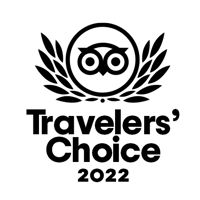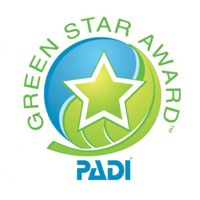South Bonaire in one day: 9 places of interest
When discovering Bonaire by car there are two tours that are a must do: "Tour North" and "Tour South". Well-known terms on Bonaire and absolutely indispensable during your vacation. While the hilly North area is characterized by cactus landscapes, caves and panoramic viewpoints, the flat South area is a true candy shop of colors, salt crystals, pink flamingos and azure blue views.
Jump in your rental car and stop at the following places of interest during your “Tour South”.
Salt extraction
The salt pans are spread over the southern part of Bonaire. The bright pink plains and the white salt mountains form a surrealistic image. When the sun shines on the basins, the salt crystals turn into true fields of diamonds. Definitely worth a stop! Tip: although it may not look attractive at first sight, the salt pier is one of the most beautiful dive sites on the island! Snorkelers can also enjoy themselves here. Stay close to the shore especially in the shallow water. The large amount of sea grass attract turtles for their lunch. A great start to your "Tour South"!
White Slave
Continue your way along Pink Beach towards White Slave. Undoubtedly a familiar image: the white slave huts against the backdrop of the azure blue sea. A beautiful image, with a dark past. The huts date from 1850 and were built as accommodation for the slaves who worked on the salt plains. Nowadays the tiny houses belong to the historical heritage of Bonaire.
Kite beach
The road is getting narrower and the landscape is changing. Birds fly over the road and mangroves appear at the scene. Two old school buses appear in sight: the kite schools of Atlantis Beach. The buses are parked here because it is the only place on island where kite boarders are allowed to enter the sea. The relaxed atmosphere at the buses is nothing like the spectacle that takes place on the water! Take a seat on the beach and feast your eyes.
Red Slave
Just past Kite Beach you'll reach Red Slave; the red slave huts. The name refers to the obelisk that stands next to the houses. If you’ve paid attention, you have already seen several obelisks along the way. There are four in total: a blue, white, red and orange one. The obelisks used to work as a means of communication. Each color referred to its own salt pan. Next to the red obelisk there used to be a large flagpole with a flag hoisted in one of the colors, so the skippers knew exactly towards which pan they had to sail to collect the salt.
Light house “Willems tower”
Just past Red Slave the road turns left and you arrive at the east coast of the island. You'll notice the difference immediately: the bright blue, flat sea gives way to high waves against a rough coastline. In the past, ships wrecked frequently on this side of the island, so that’s why the first lighthouse of Bonaire was built here in 1838. The “Willems tower” is named after King Willem 1, the first king of the Netherlands. Next to the tower you’ll see the ruin of the lighthouse keepers’ house. Nowadays the lighthouse is remotely controlled, causing this historic building to deteriorate. Fun fact: the lights of the lighthouse nowadays work entirely on solar energy, just like our dive shop and car rental!
Rough east coast
A completely different area of Bonaire: the rough east coast! The waves hit the moon-like landscape and the sea brings driftwood, flip flops and all kinds of waste to the island. Artworks of stacked stones and waste are scattered along the coastline. Make a stop at the colored obelisk and watch the waves break in front of you. On days with strong winds it is advised to have a towel in your car :-). If you are lucky you can also see a few dare devils in the water waiting for the right wave to surf.
Flamingo breeding area
Maybe you have already spotted them? On the other side of the road there is a protected bird sanctuary where large groups of flamingos can be seen! The Pekelmeer, as it is called, is one of the four areas in the world where flamingos breed. It is not allowed to enter the area, but the flamingos are clearly visible from a distance. Did you know that the Caribbean flamingo is the pinkest flamingo in the world? This is due to the small pink shrimp in the salty waters of the salt pans and the abundance of red carotenes in their local diet.
Lac Bay
After just a few more miles you reach a junction where you turn right towards Lac Bay. This shallow bay is protected by a coral dam, making this lagoon one of the most tropical you have ever seen. Lac Bay is also the playground for some of the best windsurfers in the world. It is great to see their tricks while enjoying a drink OR to go and try it for yourself. Walk in at one of the surf schools for a lesson or rent equipment. Please note: once you’ve tried wind surfing here, you’re probably spoiled for life!
“Tour South” runs over a paved road for approximately 20 miles. Because of the heat and the treacherous wind, it is advised to go with a rental car instead of a bike or scooter. Haven’t book your car yet? Check the availability of our rental cars.
7 days per week open
Openinghours:
8:00AM - 5:00PM
WhatsApp: +599-7018982
info@ab-dive.com
Kaya Industria 31, Kralendijk, Bonaire

